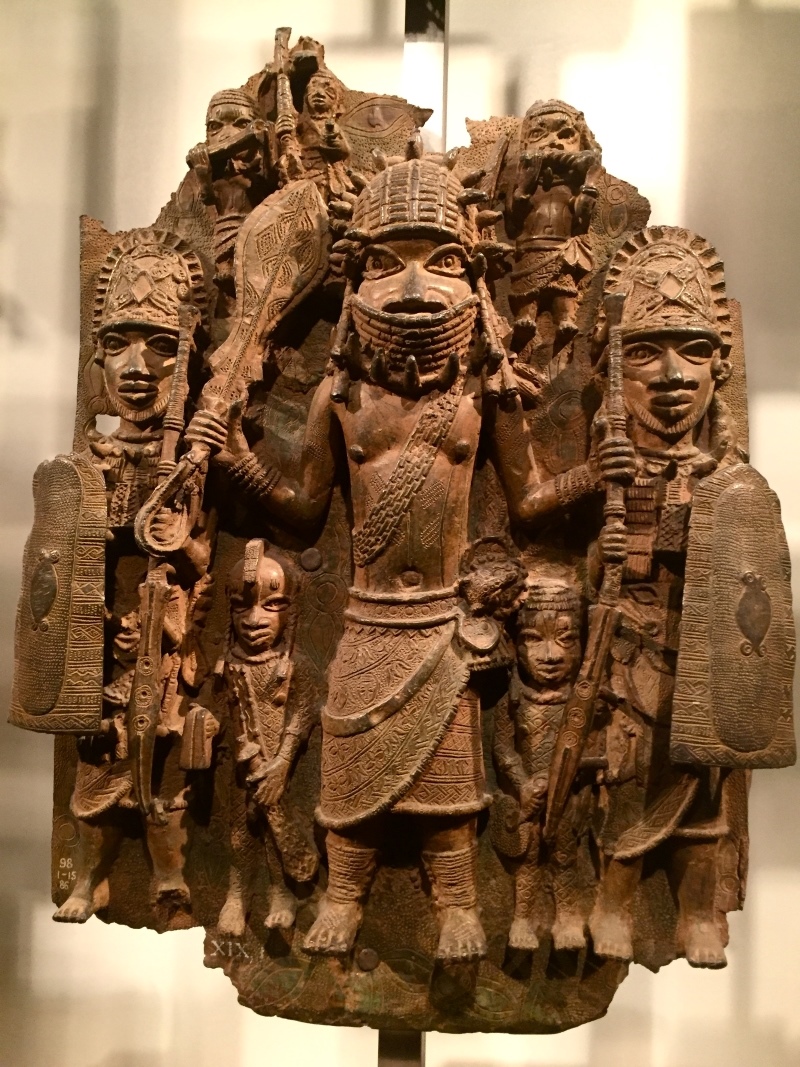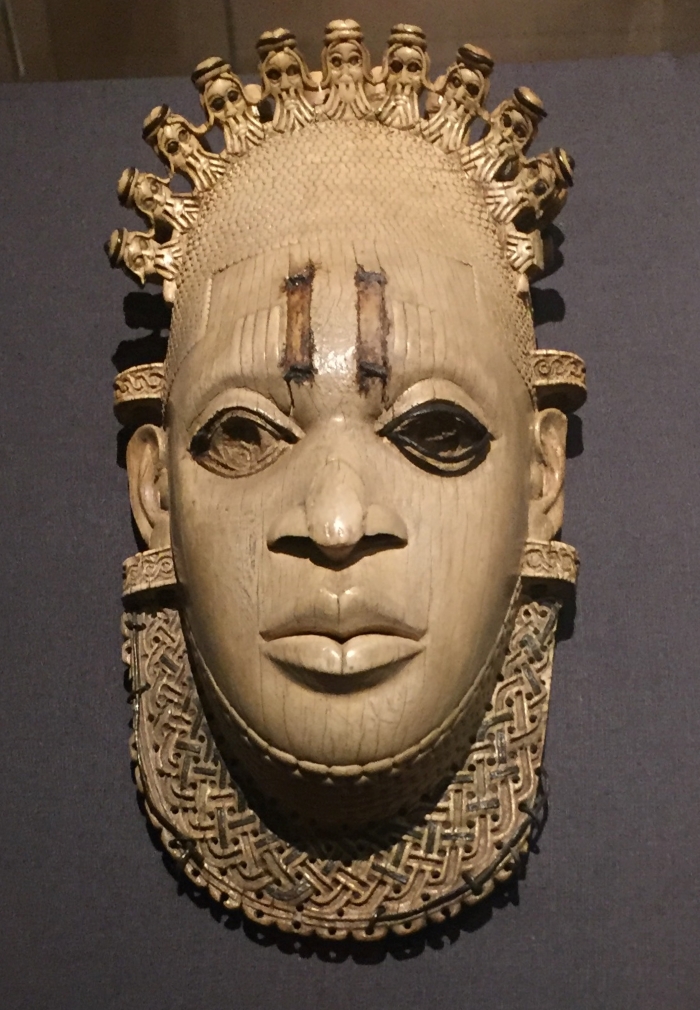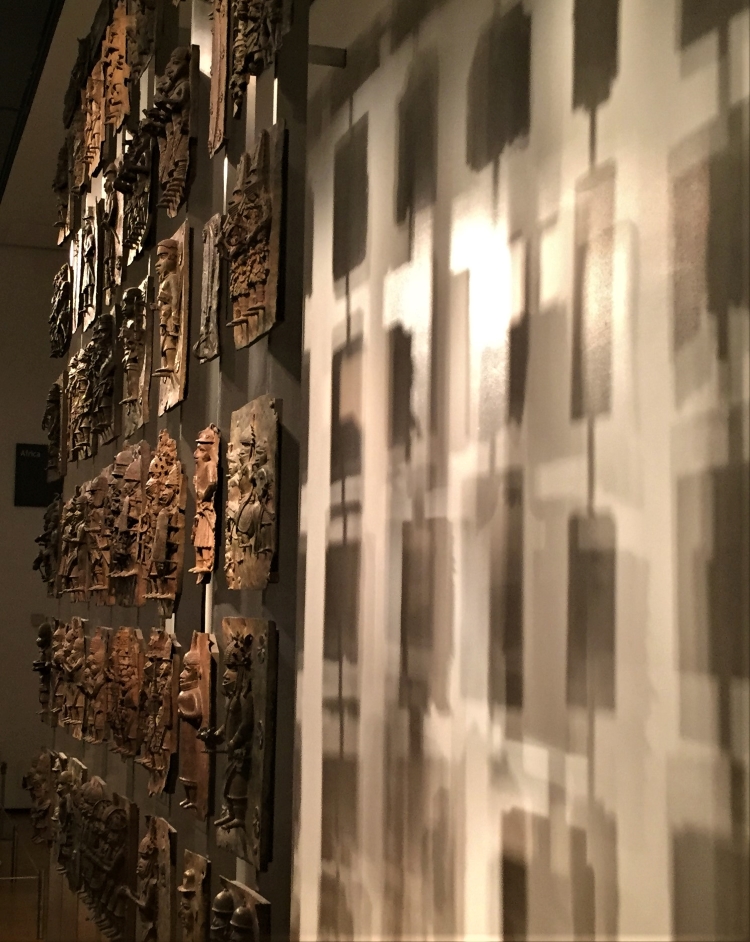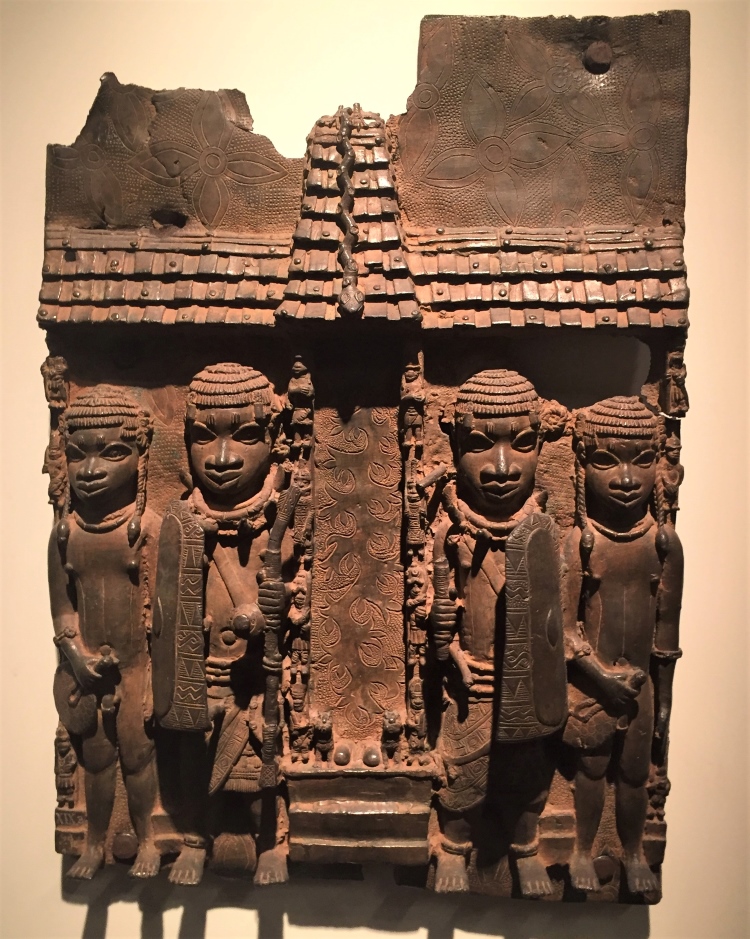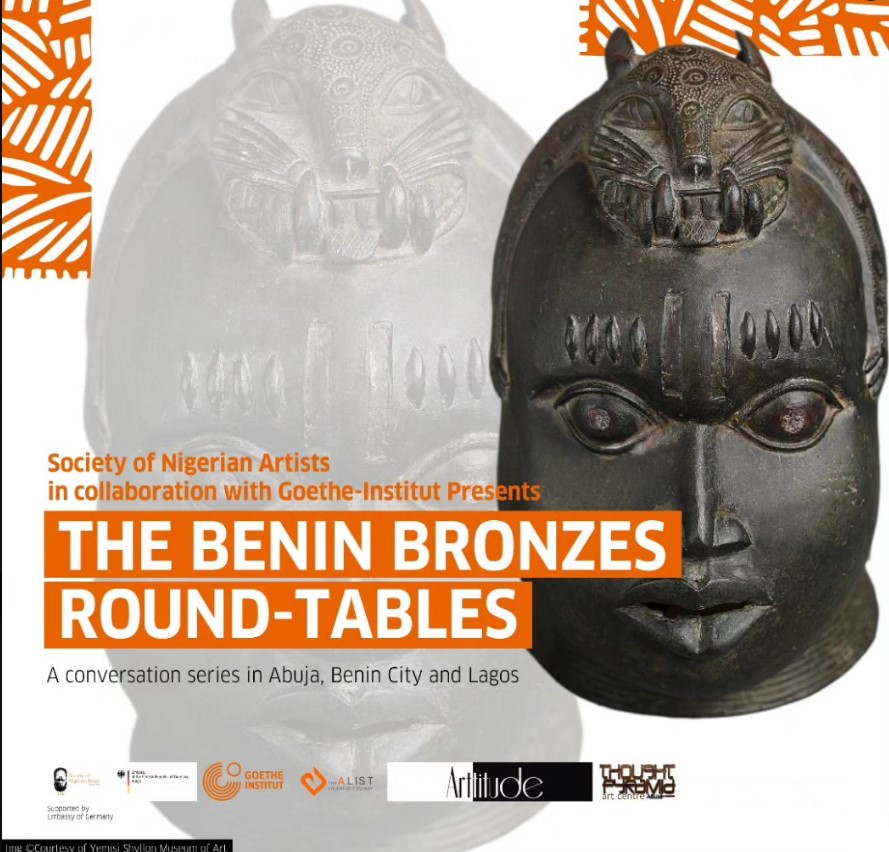
I had been interested to come across details of a 'round-table' discussion of the return of Benin Art to Nigeria, being hosted by the Goethe-Institut (the German equivalent of the British Council) in Abuja. I'd heard about it via a Twitter link and eventually ended up watching it via a recording on a Goethe-Institut Facebook page.
A recording can be accessed here:
https://www.facebook.com/nadine.siegert/videos/798083458597257/?mibextid=v7YzmG
These are just a few summary notes of points that were discussed.
The context was the return of artefacts by the German government and debate within Nigeria about 'ownership' of objects and about where and how they might be displayed. The most recent development had been a statement from the outgoing president of Nigeria that the ownership of any returned artefacts would lie with the Oba.
There was a strong 'Benin' feel to the African panellists - the representative of the National Commission for Museums and Monuments didn't attend although a member of the regional government was in the audience.
Some points that I found interesting:
 Martin Huth (Deputy Head of Missions, German Embassy) - gave a potted history of museums and collection in Germany. From the Renaissance an increased interest in ancient art and the beginnings of art collections started with state rulers in the Holy Roman Empire. This became more widespread amongst German elites after 1848, collection became fashionable and was accompanied by a developing scientific interest in ethnology. Germany was a relative 'latecomer' to European colonialism, but as this developed it brought a boost to collection. He highlighted that in the mid 20th century Germany had both perpetrated and been the victim of cultural looting; plundering art works from Jewish people and conquered populations and then losing materials to Soviet Union and Western Allies. He brought up the term the 'nationalisation of art' to describe current desires to repatriate art that had been seen to have been stolen. Huth dated a change in culture to the late 1960's with student activism and subsequent discussions in the 1970's about it being untenable to retain artefacts like Benin Bronzes. He was keen to hear what Nigerian civic society wanted as the model for display of the art and asked whether a 'museum culture' was something that African society wanted to embrace, or was this an overly Eurocentric view?
Martin Huth (Deputy Head of Missions, German Embassy) - gave a potted history of museums and collection in Germany. From the Renaissance an increased interest in ancient art and the beginnings of art collections started with state rulers in the Holy Roman Empire. This became more widespread amongst German elites after 1848, collection became fashionable and was accompanied by a developing scientific interest in ethnology. Germany was a relative 'latecomer' to European colonialism, but as this developed it brought a boost to collection. He highlighted that in the mid 20th century Germany had both perpetrated and been the victim of cultural looting; plundering art works from Jewish people and conquered populations and then losing materials to Soviet Union and Western Allies. He brought up the term the 'nationalisation of art' to describe current desires to repatriate art that had been seen to have been stolen. Huth dated a change in culture to the late 1960's with student activism and subsequent discussions in the 1970's about it being untenable to retain artefacts like Benin Bronzes. He was keen to hear what Nigerian civic society wanted as the model for display of the art and asked whether a 'museum culture' was something that African society wanted to embrace, or was this an overly Eurocentric view?
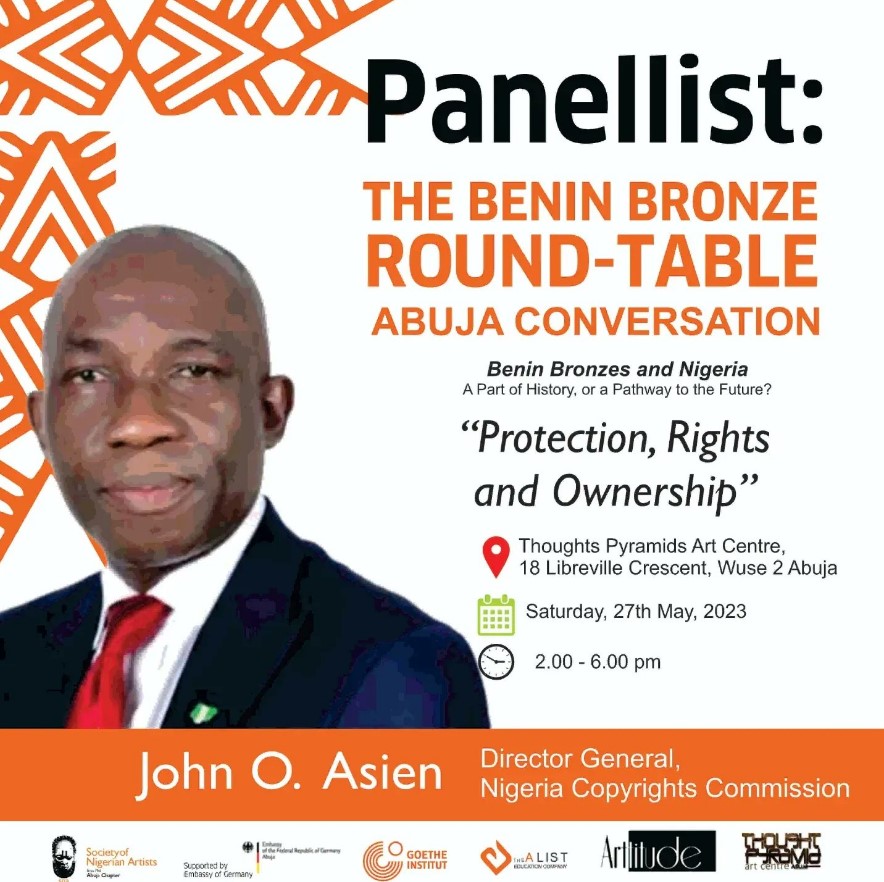 John Asien (Nigerian Copyright Commission) - was very measured about concerns over the recent Presidential decree - he stressed that the Oba still had to work with others to ensure safe storage and display of the artefacts. He made an interesting point about ownership, highlighting that African culture stressed three parties in ownership,: ancestors, current and future generations.
John Asien (Nigerian Copyright Commission) - was very measured about concerns over the recent Presidential decree - he stressed that the Oba still had to work with others to ensure safe storage and display of the artefacts. He made an interesting point about ownership, highlighting that African culture stressed three parties in ownership,: ancestors, current and future generations.
 Prof Ken Okoli (Academic, Art Historian) - made interesting points about the sacred nature of the objects (something stressed by a number of speakers) this was something that was largely passed over in the A111 module materials. He proposed at one point that to view the objects, once returned, people would need to perform various ritual ablutions - and that the objects would need to be purified on return given their 'desecration' in the West. Along with a number of people on the panel and the audience he gave a strong 'Bini' perspective and was clear he thought the objects should be returned to the Oba.
Prof Ken Okoli (Academic, Art Historian) - made interesting points about the sacred nature of the objects (something stressed by a number of speakers) this was something that was largely passed over in the A111 module materials. He proposed at one point that to view the objects, once returned, people would need to perform various ritual ablutions - and that the objects would need to be purified on return given their 'desecration' in the West. Along with a number of people on the panel and the audience he gave a strong 'Bini' perspective and was clear he thought the objects should be returned to the Oba.
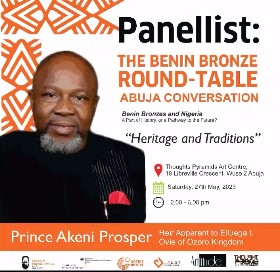 Prince Akeni Prosper (Heir-apparent to the Throne of Elluega I, the Ovie of Ozoro Kingdom) - gave an impressive account of his families' connection back to the 17th century civil wars in The Kingdom of Benin and the magical properties of the artefacts. Whilst the arguments around restitution were familiar, it was very interesting to hear them so eloquently put in terms of a 'traditional' community leader.
Prince Akeni Prosper (Heir-apparent to the Throne of Elluega I, the Ovie of Ozoro Kingdom) - gave an impressive account of his families' connection back to the 17th century civil wars in The Kingdom of Benin and the magical properties of the artefacts. Whilst the arguments around restitution were familiar, it was very interesting to hear them so eloquently put in terms of a 'traditional' community leader.
Overall it was an interesting discussion to listen in to. Perhaps understandably, there was very little positive that speakers or audience had to say about British holders of the artworks. Many of the points that would come up on any Twitter discussion about repatriation were also voiced, concerns about the security of the objects, criticism of the national government's interest in the heritage and art communities in Nigeria, questions about how accessible the objects might be once returned. There were some interesting observations about the possibility that strong Christian and Islamic cultures acted to reduce interest in these 'idolatrous' objects and that there might be limited interest amongst younger members of the Nigerian population.

